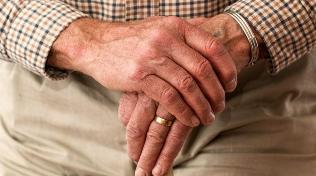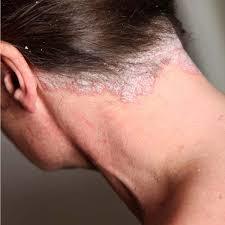Characterized by psoriasis is the most common location of the papules symmetrically on the skin of the extensor surfaces of the arms and legs and scalp.

Despite the fact that it has a leading role in the development of psoriasis is the presence of a genetic predisposition (psoriasis is a disease inherited), incentives for the emergence of disease that can serve a multitude of Exo and endogenous factors (the development of psoriasis in the nervous system, endocrine disorders, after infectious diseases, etc).
In the etiological factors of the disease
The disease has no sexual predisposition, therefore, the frequency of occurrence of psoriasis in men and women, is no different. In 12 percent of patients with the disease first develops up to ten years. Twenty years before psoriasis develops into forty-six percent of the patients, and up to thirty years at sixty percent.
In the development of psoriasis there are two age peaks:
- twenty-seven and fifty-four years for men;
- fifteen and fifty-four years for women.
Causes of psoriasis in adults
The exact cause of psoriasis is not known. A leading role in the pathogenesis of the disease belongs to genetic predisposition. Also, an important role is played by the formation of the immunological instability, lipid disorders and if the patient foci of chronic infection.
In favor of genetic theories (inherited causes of psoriasis) is evidenced by the fact that the disease is always found not only the patient but also his relatives.
For the identification of a predisposition to psoriasis can in the implementation of the classical analysis of the genome. These patients may be ten loci of the chromosomes responsible for the genetic predisposition to the disease (PSORS 1 through 9, as well as HLA – B27, 17, etc).
The main gene responsible for the maximum expressed by the innate predisposition for the development of the disease, think of PSORS1.
Also in the pathogenesis of psoriasis play an important role of genetically determined disorders of metabolism of carbohydrates and lipids. In the majority of patients with psoriasis reveal the severe hyperlipidemia and the metabolic syndrome. In this regard, in patients with psoriasis, there is a high risk for severe early atherosclerotic vascular damage and cardiovascular disease.
In addition to hyperlipidemia, to draw attention, the disturbed metabolism of fatty acids (fatty acids), the production of free radicals compounds that are involved in keratinization of the epidermis, etc ..
In the study, the psoriatic plates, showed that a large concentration of oxidized low-density lipoprotein.
The main markers for the assessment of the proliferation of keratinocytes in the outbreak of psoriasis are proteins Ki67 and keratin, six, sixteen and seventeen years of age. These markers are responsible for the pronounced the processes of hyperplasia of the prostate, disorders of differentiation of cells and development of inflammatory reactions in the dermis.
The result of this is that even with the onset in the stage of clinical recovery in psoriasis (the disappearance of inflammation from the epidermis) may take the inflammatory process in the blood vessels of the dermis.
Also in the development of inflammation in the outbreak of psoriasis the role of activated T-lymphocytic cells, mediators of inflammatory reactions, inflammation in the microvasculature. In a study of the microflora of the skin in patients with psoriasis reveal streptococci, can lead to the development of and acute guttate psoriasis.
The immunological basis of the pathogenesis of psoriasis is the progression of the immunocompetent cells, activated CD4 + T-lymphocyte cells and cytokines with anti-inflammatory. In favour of this theory is demonstrated by the fact that monoclonal antibodies in psoriasis that works against activated CD4 + T-lymphocyte cells have a great therapeutic effect. Also, effective cure for psoriasis are drugs which aim to inhibit the production of factor of tumor necrosis.
Contagious psoriasis other
No. Psoriasis is a genetic disease.
Or psoriasis is passed from person to person
No. Catch psoriasis from another person, it is impossible. Despite the fact that streptococcal infections can be the precipitating factor, the person without a genetic predisposition to the disease, psoriasis will not be there.
Or psoriasis transmitted sexually
No. Psoriasis is not contagious and is not transmitted, neither in the air, all the contact, either sexual or in any other way.
If passed, the psoriasis hereditary
For the development of psoriasis requires a genetic (hereditary) predisposition. Therefore, the disease is often found in the near relatives. In the presence of psoriasis in the parents, there is a high risk of psoriasis and have a baby.
However, some authors differ psoriasis other types. It is assumed that this variant of psoriasis that develops in patients under forty years of age and primarily affects the joints and the nail plate, which is not connected with a heredity.
Can you die from psoriasis
No. Psoriasis is not life threatening diseases. The prognosis for these patients is favorable.
However, psoriasis is much more difficult to complete the patient's life, he causes a lot of discomfort and reduction of social activities.
It should also be noted, however, that pustular psoriasis can occur is very difficult, accompanied by a discharge and suppuration of the pustules, even apostasy of the skin type of "purulent the lake". In this case, it might be the development of the erythroderma, secondary bacterial complications of the common damage, etc ..
The triggering factors of psoriasis development
Aggravating factors that contribute to exacerbations of psoriasis are:
- damage to the skin;
- endocrine disorders;
- pregnancy;
- the formation of metabolic disorders;
- the use of drugs, beta-blockers, anti-malarial SR-V, etc;
- the presence of foci of chronic infection (particularly streptococcal infection);
- the abuse of alcohol;
- Smoking;
- excessive exposure to the sun;
- consumption of spicy, sweet, fatty foods, etc;
- acute infectious diseases;
- acute allergic diseases;
- stress, emotional overload (psoriasis nerves becomes worse, more often).
The classification of psoriasis
Types of isolated forms of psoriasis:
- vulgaris (common psoriasis);
- exudative;
- chronic Palmar-plantar;
- warty;
- follicular;
- nail;
- pustular;
The disease can carry the progressive, stationary.
The extent of damage to distinguish limited, common and general flow.
Also there can be seasonality of the exacerbations: winter, summer, and indeterminate (non-season) exacerbation of psoriasis.
Pictures, symptoms and treatment of psoriasis in adults

For psoriasis is characterized by the appearance of pink-red or bright red papules, covered with silvery, white scales, loose consistency. Itchy skin may be missing. Many patients have noted, the look, the feeling of tightness of the skin.
Intense itching properties, as a rule, for psoriatic injury scalp and the perineum.
The occurrence of pain in the joints observed in the development of psoriatic arthritis.
The most typical forms of psoriasis is a triad of specific symptoms :
- the emergence of the phenomenon stearin spot (strengthening of the peeling between the diagnosis of psoriatic papules, whereby it becomes similar to a drop of stearin);
- the appearance of the terminal films (the look of the thin transparent film which remains after when poskablivanii will separate all the peeling);
- the phenomenon of blood dew or the appearance of pinpoint bleeding at the site of the refusal of jack movies.
Psoriatic papules can be worn separate or merge. The size can vary from tiny to covering a large surface of the skin. The most common localization of papules are the elbows, knees, head (scalp) and back.
In rare cases, plaque can affect the mucous membranes of the mouth and oral cavity.
In children, elderly patients and individuals with diabetes may develop a folded form of the disease. In this case, the effect on the skin behind the ears, armpits, crotch, buttocks, around the navel and under the Chest.
Patients with this psoriasis can without peeling. The surface of the psoriatic lesions may be smooth and bright red. In some cases, this may cause maceration of the folds.
In some patients the only manifestation of the disease can be a lining on the skin and the lining of the genital system.
Usually psoriatic lesions on the skin are not symmetrical in nature, but some patients may experience unilateral rash. You may also receive curly psoriatic lesions (annular, arcuate, geographical, etc).
Patients with long course of disease, long existing lining on the skin of the lumbar and gluteal region may be accompanied by increased warty growths.
In addition, the reasons for the occurrence of verrucous psoriasis can include:
- purulent infections of the skin;
- wrong external treatment (usually self);
- unwanted body weight.
When the warty forms of the disease, the scales start to stick together with each other, forming on the surface of the panels yellow crust.
In some patients may occur in the insulation, which occur Palmar-plantar psoriasis. In this case, patient care, painful cracks, pustules, papules, erythematous-squamous panels on the palms and feet.
Frequent manifestation of psoriasis is injury to the nail plate. In most cases, the appearance of the dotted recesses on the surface of the nails (dystrophy). Also can appear the deformation of the nail, longitudinal and transverse furrows, thickening of the nail plate, is loosening and changing colors, bleeding under the nail plate.
In psoriatic erythroderma, appearing usually subject to excessive sun exposure or improper topical treatments, there is a pronounced swelling of the skin, redness, intense itching and flaking, fever, nausea and loss of appetite. In severe, can cause anemia, heart failure, kidney disease and the liver, dehydration and alopecia areata.
Psoriasis and pregnancy is a danger to the child, especially
Psoriasis does not violate the reproductive function and no contraindications for pregnancy. It should be noted that many of the women during pregnancy, the disease is easier than normal. However, about twenty percent of women may be expressed aggravation of the disease.
In General, psoriasis does not affect the pregnancy and threatens the life of a child. However, in patients with arthritis, it increases the load on the joints, there could be significant deterioration. In the general forms of pustular psoriasis, the possible emergence of secondary bacterial complications.
It should be noted that it is from psoriasis is that it is not valid for infectious diseases, the mother is allowed contact with the child and breast-feed. The probability for the occurrence of psoriasis in the future is equal to approximately 15-20%, if the bad only one parent, and approximately 50% when both parents are sick.
The main problems in the treatment of psoriasis in pregnant women is that they are contraindicated in most industrial medications. Therefore, when planning pregnancy should inform your doctor so that he is appropriately adapted to the treatment.
Self-medication is strictly prohibited and can cause a lot of damage both for mother and child (some drugs have toxic effects on the fetus).
Disease diagnosis
The diagnosis put on the basis of the specific symptoms of (psoriatic triad). And also, if necessary, information on the histological, immunological, and radiological studies.























